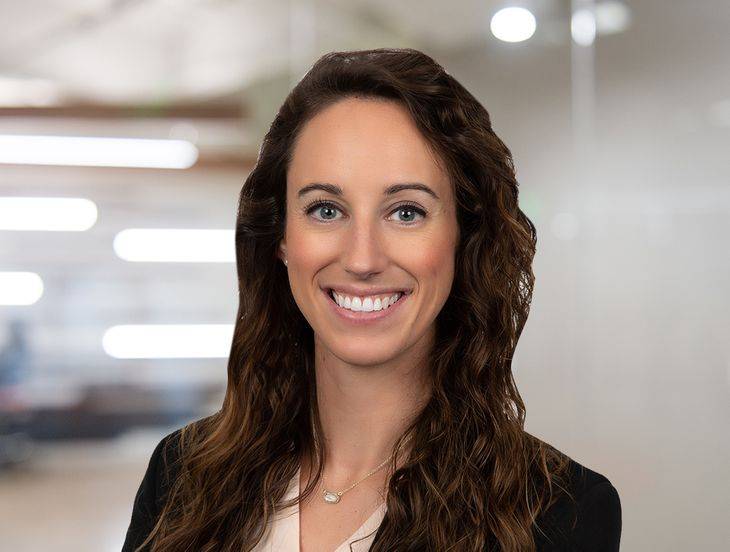FP COVID-19 Employment Litigation Tracker Reveals New York Is A Hotspot For Workplace Claims
Insights
7.24.20
The state of New York has not been immune to the fast-growing COVID-19 employment litigation case load. This should come as no surprise to businesses located here, given that New York has been one of the states hit hardest by the pandemic and typically has one of the most voluminous employment litigation dockets. According to the FP COVID-19 Employment Litigation Tracker, a total of 28 cases have been filed in New York state and federal courts as of July 22. The U.S. District Court for the Southern District of New York, which encompasses Manhattan, leads the pack with 11 cases in its district. What are the five most important lessons you can learn from this data?
1. Individuals And Class Actions Alike Gaining Traction
Individual lawsuits filed by a single disgruntled employee (or ex-employee) are not the only kinds of COVID-19-related claims we are seeing in New York. There have been a number of class action lawsuits filed as well, constituting almost 29% of the total number of COVID-19-related cases in New York.
2. Traditional Labor Claims And Discrimination/Retaliation Claims Race To Top Of Docket
Traditional labor claims (injunctions, unfair labor charges, protected activity, First Amendment challenges, etc.) top the list of most frequently filed COVID-19 claims (32%), with employment discrimination claims, retaliation claims, and unsafe workplace claims all tying for second-most filed (almost 15% each).
Many of the unfair labor claims also relate to unsafe workplace claims, and the retaliation claims are also entwined with safety concerns, making clear that safety related concerns are currently dominating the New York COVID employment litigation docket. Examples include an unfair labor claim where correction officers claim their employer failed to implement a proper workplace safety policy regarding COVID-19 (N95 masks, medical testing for the officers, etc.); an injunction request where the nurses claim their hospital did not supply them with sufficient masks or gowns and failed to comply with staffing ratios for the ICU units; and an unsafe workplace claim where the employer allegedly forced its correction officers to work three consecutive eight-hour minimum shifts without adequate rest and failed to require a negative COVID-19 medical test result as a condition of returning to work. Additionally, employees are bringing claims for retaliation where they allege their employer took adverse action against them for speaking out about their safety concerns.
Of the pandemic-related discrimination claims, many of them sound like your usual workplace disputes wrapped in a COVID-19 context. Examples include a race discrimination claim where a receptionist claims she was discriminated against and harassed for her mild Spanish accent and fired pretextually for possible exposure to COVID-19 after visiting her daughter’s school; a 62-year old plaintiff who alleges he was first in line to be fired as part of COVID-19 related layoffs because of his age; and a lawsuit alleging that a company used COVID-19 as a pretext to terminate its minority employees.
3. Class Actions Are Focused On Unfair Labor, Wages, And Fraud
Meanwhile, class actions filed against New York employers include an array of claims. They include unfair labor, unpaid wages, employee leave, fraud, and retaliation. For example: a group of railway workers claim their pay and benefits were cut to make them part-time workers despite the employer receiving $5 billion in public funds in exchange for keeping workers on full-time; an allegation of a union agreement breach where the employer threatened to keep employees on the COVID-19 reduced schedule permanently; claims filed by a class of EMTs who worked on-call throughout the COVID-19 pandemic alleging they were not properly compensated by their employer; and an employee claiming he was threatened with suspension after he reported that his union employees had not been provided with sufficient PPE.
The safety of your workforce and visitors to your business is critical during this time – and these early class actions reveal that employees are well aware of their rights. If you have not yet developed and distributed a comprehensive safety plan as your employees return to work, you should make this a priority. This is also true to your compensation obligations. You need to make sure that your organization understands all of the different wage and hour responsibilities that might come into play during this time.
4. What Should Employers Do?
These claims should serve as a blunt reminder for employers that typical best practices cannot be ignored simply because we are operating in unprecedented times. You need to continue to train your managers so they have a clear understanding of their responsibilities and employees’ rights. When it comes to disciplining employees and terminations, your managers need to coordinate with human resources personnel and your legal department.
Documentation and consistent treatment of workers remains of paramount importance.
Meanwhile, the pandemic has created a whole new set of compliance challenges with the implementation of an emergency paid leave system and an emergency family leave requirement, both on a federal level and statewide. Given that many impending lawsuits could potentially focus on an alleged incorrect application of these laws, your company would be better protected if your front-line managers and human resources personnel are well versed in all the new leave law requirements.
5. New York Employers Might Be Especially Vulnerable
Employers in New York are not new to employment-related litigation. The state has been a hotbed for employment litigation for years. However, just because your company based in New York has already developed a standard strategy to deal with lawsuits does not mean you should feel comfortable sticking with your normal routine.
You need to adapt all aspects of your organization to the challenges raised by the current state of uncertainty, and this includes your employment compliance efforts and litigation defense posture. If you have operations in New York, you should coordinate with your employment counsel to determine whether you should implement additional steps to proactively address the current climate. And regardless of your location, you should regularly check the Fisher Phillips COVID-19 Employment Litigation Tracker to determine which states are seeing the most new claims on a weekly basis.
Fisher Phillips has been tracking federal and state cases that have been filed as a direct result of the COVID-19 pandemic across the country, focusing on traditional employee vs. employer cases. Because of the inherent limitations in tracking such cases in every courthouse in the country, the information gathered should be considered a comprehensive, but not exhaustive, data set. However, the data reveals definitive trends and offers a glimpse into the landscape faced by employers at the current time.
Want More Information?
For further information about COVID-19-related litigation being filed across the country, you can visit our COVID-19 Employment Litigation Tracker. Our COVID-19 Employment Litigation and Class & Collective Actions section also has a listing of our litigation-related alerts and team members handling these types of cases.
Fisher Phillips will continue to monitor the rapidly developing COVID-19 situation and provide updates as appropriate. Make sure you are subscribed to Fisher Phillips’ Alert System to get the most up-to-date information. For further information, contact your Fisher Phillips attorney or any attorney in our New York City office. You can also review our FP BEYOND THE CURVE: Post-Pandemic Back-To-Business FAQs For Employers and our FP Resource Center For Employers.
This Legal Alert provides an overview of a specific developing situation. It is not intended to be, and should not be construed as, legal advice for any particular fact situation.

